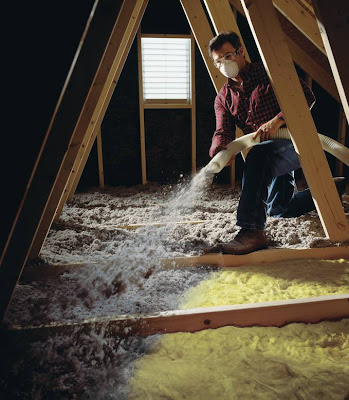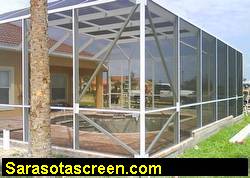(NewsUSA) - Buying a home is the largest investment most people will ever make, so it's no surprise that such a big decision may seem daunting. There are, however, some simple guidelines that can help you find a home that you will be happy with for a very long time.
A recent study conducted by Merillat, a leading manufacturer of cabinetry, examined what consumers think about when they're purchasing a home. The study found that the kitchen sways more minds than any other room, followed by the great room and the master bedroom third.
"The kitchen is the gathering place for special occasions, family functions and day-to-day activities, which is why it is so important for prospective buyers to ensure their new kitchen will meet the needs of their family from a design and functionality prospective," said Paul Radoy, manager of design services for Merillat.
Try creating a checklist to help you decide whether a kitchen is right for you. Ask yourself these questions:
1. Do I like the layout of the kitchen? Consider the kitchen from an overall perspective, and keep all the items that will require storage in mind.
2. Does the kitchen look comfortable? Do I feel good when I'm in it? You should feel at home right away.
3. Does the kitchen help facilitate frequent casual interactions with family and friends? Consider the views into the surrounding rooms, like the living and dining areas. Can you easily associate with family and friends?
4. Is the cabinetry durable and well-built? Is the finish on the cabinetry smooth and consistent? Investigate the cabinet interiors to determine whether they're covered with a durable water- and stain-resistant material or a lower-quality product. Make sure that the color of the interior complements the exterior.
5. Does the kitchen have visual impact or a good focal point like an island, cooking grotto or other unique feature? Islands are a useful feature that many homeowners desire. When examining an island, identify the tasks or storage functions it serves to decide whether it will meet your needs.)
6. Does the kitchen have adequate storage space and built-in features to accommodate my possessions? Merillat's study found that, after remodeling a kitchen, many homeowners find that they didn't include enough storage features. Make sure you don't overlook features, like drawer organizers, pull-out trays and lazy Susans.
To more learn about kitchen design and storage features visit www.Merillat.com
(NewsUSA) - As Americans work in their yards and start DIY home projects, it might be appropriate for them to think about improving outdoor security.
According to the U.S. Bureau of Justice Statistics, U.S. households experienced about 16.3 million property crimes, including burglary and robbery, in 2008. Many people feel that a home security system automatically makes their home safe, but outdated technologies may leave a home vulnerable.
Take outdoor motion sensor lighting. Burglars want to avoid detection, so they are often deterred by well-lit yards and driveways, making motion sensor lighting a wise investment. But for the past two decades, motion sensor lights have used Passive Infrared technology (PIR), which detects heat from moving objects. The problem? PIR technology can be easily fooled.
PIR sensors can be triggered by wind or temperature changes. For example, they might turn on by wind-blown leaves, but fail to detect a burglar on a cold night. In addition, PIR motion sensor lights can only detect lateral, or side to side, movement. If a burglar moves towards a PIR light in a straight line, he can approach the house without triggering the light.
But one new motion sensor light combines Doppler Radar with PIR to create more reliable home security. Precision Plus Doppler Radar, by Cooper Lighting, uses Doppler Radar to cover those areas where PIR motion sensors fail. Doppler Radar allows the motion sensor light to cover a larger range. Doppler Radar does not sense temperature, so weather changes don't affect its ability to sense somebody approaching the home. In addition, Doppler Radar can detect a person moving in a straight line towards or away from the home.
Upgrading a motion sensor light is just one way to protect your home. Some low-tech, DIY solutions include installing heavier doors and deadlocks, and removing large hedges, which burglars can use to hide.
To learn more about Precision Plus Doppler Radar, visit www.precisionplusdopplerradar.com
More
- + home security
- Inspections
(NewsUSA) - Preparing for a new baby is an exciting time in a couple's lives. And while baby-proofing electrical outlets and cabinets might seem tedious, no one ever complains about designing a new nursery.
From teddy bear wall paper to ballerina cotton sheets, nurseries allow for more fun and whimsical designs than any other room in the house. But your baby won't be small for long -- before you know it, your bundle of joy will be crawling, climbing and toddling about.
If you love redecorating, you might want to change your child's room as he or she grows. If your child will be sharing a room, or you plan on keeping one design for more than a few years, you should make decisions with the future in mind.
Pottery Barn Kids offers the following tips for parents starting to design new nurseries:
* First and foremost, make sure that your baby's room is safe. Choose furniture, bedding and accessories that meet or exceed U.S. safety regulations. Don't place the crib near a window, and keep drapery and blind cords well out of the baby's reach. Cover all electrical outlets.
* Design for function and beauty. Caring for a new baby is harrowing enough on its own -- make your life easier by choosing changing tables with built-in drawers or shelves, storage options that are easily accessible, and machine-washable bedding and changing-table covers.
* Find bedding that you love, and design your nursery around it. Pick a light, medium and dark shade from the bedding, and use them throughout the room. Consider how long your design will be appropriate for your child. Two years? Longer? Think about color and pattern themes that will last through early childhood.
* Go organic. You are going to spend a lot of time washing your baby's bedding, so choose three to four fitted sheets to keep in constant rotation. Organic cotton bedding is both eco- and baby-friendly, as the cotton is grown without toxins or pesticides. Pottery Barn Kids offers 100 percent organic bedding.
* Add those special touches. Put photos on display, or spell out your baby's name on the wall. Decorate with handprints or footprints and plush toys, or paint a mural. You don't want to use all of these examples -- the nursery would look too crowded -- but two or three will make your nursery feel like home.
For more tips on decorating your nursery, visit the Web site www.potterybarnkids.com
(NewsUSA) - When many consumers decide to add a new deck or replace an existing one with a low-maintenance composite version, they typically discover an overwhelming amount of information available. Homeowners might find themselves faced with many options and have questions about how to choose the right product. What type of composite decking is right for me? How do I choose from the different types of deck boards? What color combinations are right for my home?
There are quite a few different decking options available, based on individual needs and budgets. Composite decking is available in several different types of boards with varying looks, colors and qualities; therefore, it is important to understand all the alternatives.
Based on all these options, how can consumers decide which is best for their lifestyle? TimberTech, one of the leading manufacturers of composite decking, railing and fencing products, offers a number of tools that help sort through the details of choosing a deck and assist consumers in making educated decisions about their new deck.
At the beginning of the decision-making process, consumers first need to choose the type of board that best fits their lifestyles and tastes. Tools like the Product Selector guide consumers through a series of step-by-step questions that are used to uncover their needs, habits and deck usage. The results give consumers options of board type and style that are best suited to their needs.
Another tool that is helpful during the planning process is the Deck Designer. By using the Deck Designer, consumers can enter the desired size, shape and color of their dream deck so that they can envision the deck before it is built. When the deck design is complete, users can print a 3-D model of the deck, build a materials list and get installation guidelines and helpful construction tips for their deck.
The newest tool, designed to help consumers decide among the varieties of color combinations available, is TimberTech's Color Visualizer. The Color Visualizer lets consumers choose different home colors and decking color combinations. The colors of the primary decking, accent decking, rails or balusters and posts can all be changed to build a customized look. If consumers are looking for more direction, the Color Visualizer also offers suggestions of the most popular color combinations.
No matter what type of composite decking consumers choose, it is important to understand the different offerings available by taking advantage of these free interactive tools available online at www.timbertech.com
(NewsUSA) - Homeowners seeking to pad their homes and wallets should consider re-insulation projects that maximize energy efficiency year-round. Simple, energy-saving practices will not only reduce heating and cooling bills every month, but also will result in a higher tax return next year.
The federal government expanded the scope of a tax credit program that rewards homeowners for energy-efficiency improvements, giving homeowners a prime opportunity to increase their homes' efficiency. Homeowners are eligible to receive a 30 percent federal tax credit up to $1,500 for weatherization improvements in their homes through Dec. 31, 2010,
And as far as energy-efficient improvements are concerned, re-insulation is a smart solution for the near and short term.
"Most of the steps you can take to improve your home's energy efficiency in the cooler winter months are equally as effective in the warmer summer months, when the thermal flows are simply reversed," said Bohdan Boyko, building science manager with GreenFiber, a natural-fiber insulation product made from 85 percent recycled materials. "In most areas of the country, winter has the greatest temperature differences between inside and outside temperatures, but in either situation -; summer or winter -; a properly insulated home is one that will help cut energy bills, lower the home's carbon footprint and help keep a family comfortable."
Homeowners can find information on the benefits of re-insulation, including R-Value education, how to's and tax credit information from the American Recovery and Reinvestment Act of 2009, at www.greenfiber.com where researchers engineered a special new blow-in product that aids in retro-fit projects. Older homes or homes where current insulation is inadequate can benefit from attic air sealing, duct sealing, attic insulating and side wall insulating. Because the insulation is literally "blown in" through a tube, it can reach high crevices and deep places in walls. "Re-insulation is a fast and easy way to improve a home's energy efficiency, often with little up-front cost," said Boyko. "A blow-in insulation product will perform better than material that is cut to fit, because it provides complete coverage and fills gaps, unlike fixed-dimension insulation products."
Do-it-yourselfers should have no difficulties renting equipment and tackling a blow-in natural-fiber insulation project in an afternoon. And because natural-fiber insulation is made from recycled content, it provides the greatest benefit to the environment, diverting materials from local landfills and reducing the energy a home could draw.





.jpg)
.jpg)
.jpg)

.jpg)